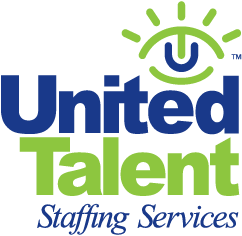Meet Greg, our protagonist, who has just landed a position as Production Associate at XYZ Company. Despite his enthusiasm, he soon realizes that the organization may not be the right fit for him. Within his first few weeks, Greg struggles to understand the significance of his role and feels he’s been thrown into uncharted waters without adequate support. Lack of leadership coordination, coupled with the absence of training around systems and processes, are some of the factors discouraging this newly placed talent from sticking with the company.
Greg’s experience is not unique. Countless employees have discovered that their new workplace lacks a critical component of successful business models: a dedicated onboarding strategy.
A well-executed onboarding process is crucial to new employee success and an organization’s overall growth. A great onboarding experience can lead to higher retention rates, enhanced employee engagement, and improved performance. In this blog, we will explore actionable ways businesses can design a solid onboarding strategy to prepare new employees for success in the workplace.
Start with Preboarding Employees
A successful onboarding process comprises several stages, each serving a specific purpose in integrating new employees into the organization. Preboarding is the period between the job offer and the new hire’s first day, and it’s essential to be in communication before new employees even enter their first day on the job. Organizations can use this critical professional relationship-building time to:
- Send welcome emails.
- Provide necessary paperwork.
- Share information about the company culture.
Preparing new employees ahead of the curve ensures a smooth transition and helps establish a positive impression of the overall work environment.
Making First Days Count
The first day in a new position can be overwhelming for employees and sometimes even spike feelings of anxiety. To make this experience a positive one, organizations should create a welcoming environment, introduce new hires to their colleagues, and provide an orientation. First days should always include completing any required paperwork, an introduction to the company’s mission and values, and an overview of the workplace.
During the first few weeks, employers should provide structured training and support, helping new employees understand their roles and responsibilities – as this is the time to set expectations, establish short-term goals, and discuss performance metrics. Onboarding is a process—not a one-time event. Regular check-ins, feedback sessions, and growth opportunities ensure that new employees continue to feel supported and engaged in the long run.
Key Elements of Effective Onboarding
A productive onboarding process incorporates several key elements to ensure new employees feel welcomed and prepared for their new roles:
- Clear communication and setting expectations from the outset are crucial. Employers must communicate their expectations, both in terms of performance and behavior, to establish trust and foster a positive working relationship.
- Thorough training on the organization’s products, services, systems, and processes. This training should also include skill development opportunities, enabling new hires to excel in the long run rather than the short term.
- Connecting employees with experienced colleagues can facilitate a smoother transition. Mentors can provide guidance, answer questions, and offer support both during and after the onboarding process.
- Promoting social integration is vital for new hires to feel welcomed and integrated into the workplace. To facilitate this, companies can create opportunities for team-building exercises that encourage collaboration, schedule group lunches to foster casual conversations, and host informal gatherings where employees can bond and develop stronger team cohesion.
Measuring Onboarding Success
To ensure your onboarding process is effective, consider evaluating its success using various metrics and feedback channels, such as:
- Track key performance indicators (KPIs) like time-to-productivity, goal achievement, and performance improvement to assess the effectiveness of your onboarding program.
- Solicit feedback from new hires about their onboarding experience. This can help identify areas for improvement and ensure that future employees have a better experience.
- Monitor the retention rates of new hires and compare them to industry averages. High retention rates can indicate a successful onboarding process, while high turnover may signal the need for improvements.
Not All Onboarding Is the Same
Customizing the onboarding experience is essential for the long-term success of any business, since it helps organizations fulfill the specific demands of both the organization and its team members. Engaging several stakeholders, including managers, mentors, and human resources employees, provides a complete support structure for new recruits. By implementing the tactics outlined here, businesses can create an effective onboarding process that ensures employee success and fosters long-term growth.

